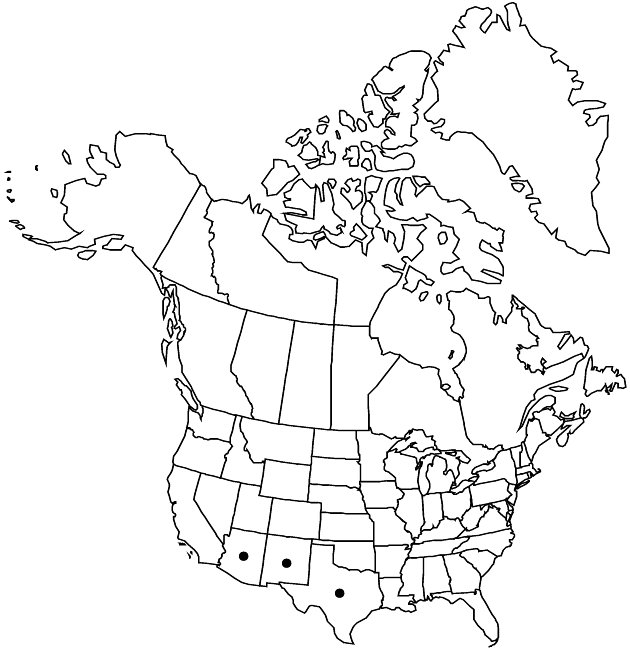Carphochaete bigelovii
Smithsonian Contr. Knowl. 3(5): 89. 1852.
Stems usually stiff, erect. Leaves often fascicled on older growth; blades 5–35 mm. Heads terminal (± pedunculate) or in leaf axils (sessile). Involucres 12–20 mm. Phyllaries: gland-dotted, sometimes puberulent as well, margins narrowly hyaline, apices acute. Corollas 15–20 mm, throats usually purplish, lobes creamy white. Cypselae yellow-green to golden brown, 11–14 mm; pappus scales mostly brownish to purplish with colorless, hyaline margins, aristae of the longer 1–3+ mm, scabrous. 2n = 22.
Phenology: Flowering Jan–Jun.
Habitat: Sandy soils, rock outcrops in grasslands, chaparral, pine-oak woodlands
Elevation: 900–2200 m
Distribution

Ariz., N.Mex., Tex., Mexico (Chihuahua, Coahuila, Sonora).
Discussion
Selected References
None.
Lower Taxa
None.
